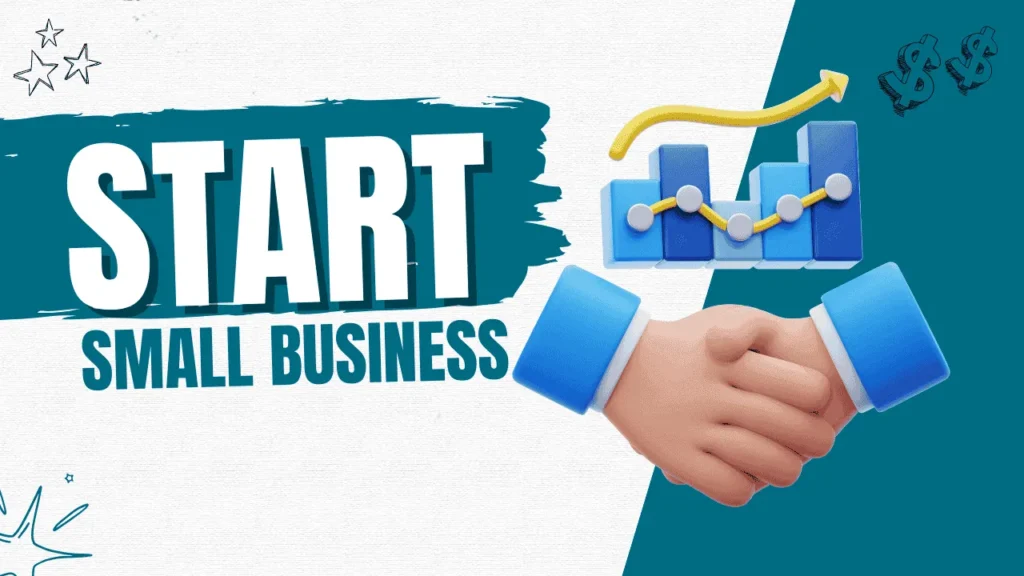Small business in the USA is backbone of the American economy, driving innovation, creating jobs, and fostering community development. They represent a diverse range of industries and play a crucial role in shaping local economies and the national marketplace.
This comprehensive guide explores what defines a small business in the USA, its importance, and the essential steps to start one.
What is a Small Business in the USA?
1. Size and Scope
A small business is defined by its size in terms of revenue, number of employees, and operational scale. The Small Business Administration (SBA) provides specific criteria based on industry, such as:
- Annual Revenue Thresholds: Varying by sector, typically ranging from $1 million to $41.5 million.
- Employee Count: Usually fewer than 500 employees, depending on the industry.
2. Ownership and Structure
Small businesses are often:
- Independently Owned and Operated: Distinct from franchises or large corporations.
- Flexible in Structure: Sole proprietorships, partnerships, limited liability companies (LLCs), or closely held corporations.
- Owner-Led: Founders are deeply involved in daily operations and decision-making.
Importance of Small Businesses:

1. Job Creation and Employment
Small businesses contribute significantly to employment:
- Employ nearly half of the U.S. workforce.
- Serve as primary employers in local communities.
- Provide diverse job roles across various sectors, from retail to technology.
2. Innovation and Entrepreneurship
Small businesses are incubators of innovation:
- They introduce new ideas, products, and services to address market demands.
- Startups often emerge as small businesses, driving industry disruption and technological advancement.
3. Community Engagement
Small businesses strengthen communities by:
- Supporting local events and initiatives.
- Fostering cultural diversity and neighborhood vitality.
- Building personal relationships with customers, enhancing trust and loyalty.
Characteristics of Small Businesses:

1. Local Focus
- Serve niche markets and specific geographic areas.
- Establish strong ties with local communities, creating a loyal customer base.
2. Operational Flexibility
- Adapt quickly to market trends, consumer preferences, and competitive pressures.
- Pivot strategies to capitalize on emerging opportunities.
3. Entrepreneurial Spirit
- Thrive on creativity and problem-solving.
- Using limited resources to achieve impactful results.
How Small Businesses Drive Economic Growth
1. Contributions to GDP
- Collectively, small businesses generate significant revenue and tax contributions.
- Stimulate local spending and supply chain activities, supporting broader economic stability.
2. Sector Diversity
- Operate across industries like retail, hospitality, technology, manufacturing, and services.
- Introduce specialized products, niche services, and innovative solutions that enhance market competition.
How to Start a Small Business in the USA
Starting a small business in the USA requires careful planning, strategic execution, and adherence to regulations. Here’s a step-by-step guide:
1. Develop Your Business Idea
- Identify a gap in the market or a problem you’re passionate about solving.
- Validate your idea through market research and customer feedback.
2. Write a Business Plan
A solid business plan is crucial. Include:
- Executive Summary: Outline your business idea and goals.
- Market Analysis: Understand your target audience and competitors.
- Operational Plan: Detail how your business will function daily.
- Financial Plan: Budget, funding requirements, and revenue projections.
3. Choose a Legal Structure
Select the most suitable structure for your business:
- Sole Proprietorship: Simple and straightforward but with personal liability.
- LLC: Offers liability protection and flexibility.
- Partnership: Ideal for businesses with multiple owners.
- Corporation: Suitable for larger-scale operations.
4. Register Your Business
- Register your business name with the appropriate state and federal authorities.
- Obtain required licenses and permits to operate legally.
5. Secure Funding
Explore funding options:
- Personal Savings: A common choice for new entrepreneurs.
- Small Business Loans: Offered by banks and credit unions.
- Grants: Government programs like the SBA provide grants for eligible businesses.
- Crowdfunding: Platforms like Kickstarter can help raise capital.
6. Set Up Your Operations
- Choose a location (physical or online) that aligns with your business goals.
- Establish systems for inventory management, customer service, and financial tracking.
7. Build Your Brand
- Develop a unique logo, website, and marketing materials.
- Use digital marketing strategies, including social media and SEO, to increase visibility.
8. Launch Your Business
- Start with a soft launch to test your processes.
- Use promotions and campaigns to attract your first customers.
Overcoming Challenges for Small Businesses
1. Financial Management
- Monitor cash flow and manage expenses carefully to ensure sustainability.
2. Competition
- Differentiate your offerings with unique products or exceptional customer service.
3. Regulatory Compliance
- Stay updated on industry-specific regulations and ensure timely tax filings.
Final Thoughts
Small businesses are the lifeblood of the American economy, contributing to innovation, job creation, and community development. Whether you’re starting a retail shop, tech startup, or service-based business, the journey of building a small business in the USA requires vision, planning, and perseverance.
By supporting small businesses, we can foster a thriving economy that promotes entrepreneurship, strengthens communities, and enhances the quality of life nationwide. Take the first step today and turn your business idea into reality!


